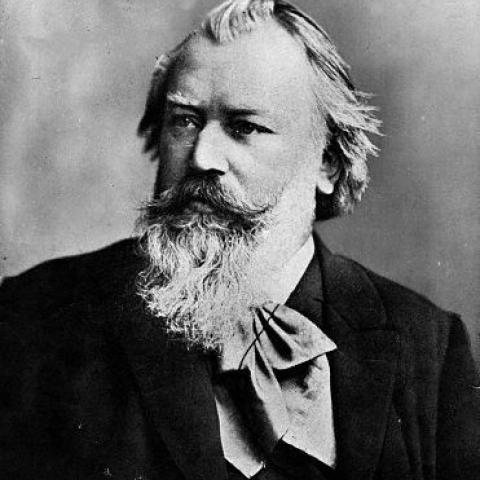similar passages that lead in different directions

“There is nothing remarkable about it. All one has to do is hit the right notes at the right time, and the instrument plays itself.” —Bach’s reply to compliments on his organ playing (The New Bach Reader [New York: Norton, c.1998], p. 412, #404).
This brief essay is about “hitting the right notes.” Among the many technical difficulties players encounter in performing Bach’s organ music, some of the most treacherous are those passages that are very similar (sometimes almost identical) to each other. They may differ by only one note or one accidental, but that difference sends the music in an entirely new direction.
Passages like these are at times quite evident and easily spotted, especially if they involve first and second endings for a repeated segment of music, e.g., the repeated stollen in settings of chorales cast in bar form (see ex. 1). At other times, however, such passages can be quite difficult to identify, a circumstance that is especially distressing when they become clear for the first time in public performance. A particularly distressing incident of this, dating from student days, is seared into this author’s memory. A student was performing the first movement of Bach’s Trio Sonata No. I in E-flat Major, BWV 525. The performer reached mm. 57-58 (Ex. 2), but at that point reverted to mm. 10-11 (ex. 3). We then heard the entire movement again. Only when, at m. 58, the student again shifted to m. 11 did the presiding instructor end the student’s misery by bringing the performance to an abrupt halt. Passages such as these may be separated by a number of measures (occasionally they may even be in different movements), and their differing contexts may veil their similarity (compare examples 4 & 5).
Identifying such pivot points becomes easier when memorizing a piece. When players are not reading the score, they are more likely to stumble at those points where their ears call for one sound while their fingers automatically execute another. When such confusions occur, it is very much to players’ advantage to stop and try to determine where the similar passage(s) is (are), thereby raising the difference to a conscious level and making careful note of it. Doing this increases the subsequent chances of successfully navigating the (almost) twin passages. It also results in a finer comprehension of the form and structure of the piece.
The reader will find below a list of such similar passages in the various chorale settings that form Bach’s Orgelbüchlein. There may be similar instances of which I am yet unaware, and I would be grateful to anyone who might be able to help complete the list.
Nun komm, der Heiden Heiland, BWV 599
m. 2, b. 1-2/m. 8, b. 3-4.
Gott, durch deine Güte, BWV 600
m. 3, b. 3/m. 8, b. 3
mm. 4-5/mm. 21-22
mm. 11-12/mm. 24-25.
Puer natus in Bethlehem, BWV 603
ped. mm. 2-3/mm. 9-10
ped. m. 6, b.3/m. 10, b. 3.
Der Tag, der ist so freudenreich, BWV 605
m. 1, b. 1/m. 6, b. 1;
mm. 4-5/m.16, b. 2-3/m. 19, b. 2-3 (all three are similar).
Vom Himmel hoch, da komm ich her, BWV 606
m. 4, b. 1/m. 8, b. 3.
Vom Himmel kam der Engel Schaar, BWV 607
mm. 4-5/mm. 8-9;
man. m. 6, b. 1-2/m. 13, b. 1-2
man. mm. 9-10/mm. 13-14.
In dulci jubilo, BWV 608
mm. 4-5/mm. 8-9
mm. 15-16/mm. 23-24
m. 16, b. 3 (bass)/m. 24, b. 3 (bass).
Christum wir sollen loben schon, BWV 611
ped., m. 6, b. 3-4/mm. 9, b. 3-4.
Helft mir Gottes Güte preisen, BWV 613
m. 3, b. 1/m. 7, b. 1
m. 12, b. 4/m. 14, b. 4.
In dir ist Freude, BWV 615
m. 13, b. 1/m. 30, b. 1.
Herr Gott, nun schleuss den Himmel auf, BWV 617
l.h., m. 6, b 1/m. 12, b. 1.
Christus, der uns selig macht, BWV 620
m. 2, b. 4/m. 6, b. 4
m. 8, b. 4/m. 19, b. 4
m. 10, b. 3/m. 21, b. 3
m. 11, b. 2 (bass)/m. 22, b. 2 (bass).
Da Jesus an dem Kreuze stund, BWV 621
m. 1, b. 3/m. 7, b. 3
m.4, b. 4 (tenor f#)/m. 8, b. 4 (tenor f nat.).
Wir danken dir, Herr Jesu Christ…, BWV 624
m. 2, b. 3/m. 14, b. 3.
Hilf Gott, dass mir’s gelinge, BWV 624
mm.2-3/mm. 5-6
l.h., m. 4, b. 4/m. 8, b. 4
l.h. m. 4, b. 4/m. 11, b. 4
l.h. m. 2, b. 1-2 & m. 6, b. 1-2/m. 9, b. 2.
Christ ist erstanden, BWV 627
Vers 1: mm. 4-5/mm. 10-11/mm.12-13
m. 5, b. 1/m. 13, b. 1
m. 6, b. 1/m. 14, b. 1
ped., m. 11/Vers 2, m. 30.
Vers 2: mm. 29-30/mm. 32-33
Vers 3: m. 41, b. 4/m. 44, b. 4
m. 42, b. 1/m. 45, b. 1
ped. mm. 45-46/mm. 54-56 (decep-
tive similarities).
Heut triumphiret Gottes Sohn, BWV 630
m. 2, b. 1/m. 10, b. 1
m. 8, b. 2/m. 20, b. 2.
Herr Jesu, Christ, dich zu uns wend, BWV 632
m. 6, b. 2-3 (no tie)/m. 12, b. 2-3 (tie)
m. 6, b. 4/m. 12, b.4.
Durch Adams Fall ist ganz verderbt, BWV 637
m. 2, b. 2-3/m. 9, b. 2-3.
Es ist das Heil uns kommen her, BWV 638
m. 4, b. 3-4/m. 5, b. 3-4/m. 7, b. 3-4.
In dich hab’ ich gehoffet, Herr, BWV 640
mm. 1-2/mm. 7-8
m. 2, b. 3-4/m. 8, b. 3-4.
Ach wie nichtig, ach wie flüchtig, BWV 644
m. 2, b. 3/m. 7, b. 3.



